Assembling a heart from roses
All flowers and leaves are blinded, dried, proceed to the assembly.
We will need this materials and tools:
- The base is an oasis (better for dried flowers, she is gray, but I did not find the basis for dried flowers in the shape of a heart)
- Thick wire for which we will plant flowers (I had a nine)
- In a good way - nippers for wire, but I do not have them, I use scissors
- Tape-ribbon
- Kruglogs.
- PVA glue
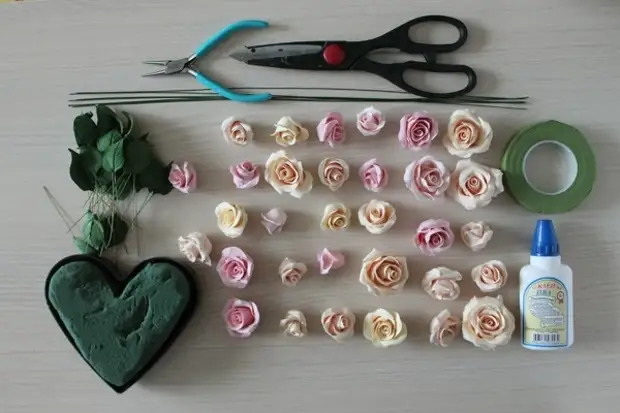
Attaching a flower and leaves to a stalk from a wire
I needed that every long wire was cut into 5 parts. In the process of assembly it turned out that the wires were long, they had to cut them a bit.
I always prefer to cut a wire with a small margin: cut off excessively, and if the wire is short, it is already not corrected.
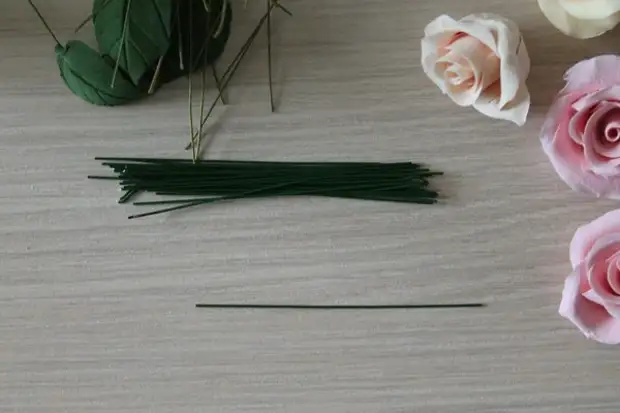
Kruglogs make a loop on the end of the wire.
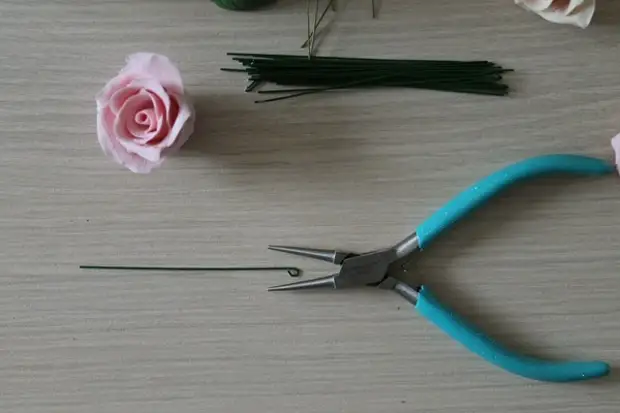
We insert the wire into the center of the rose. We try not to damage the central curl:
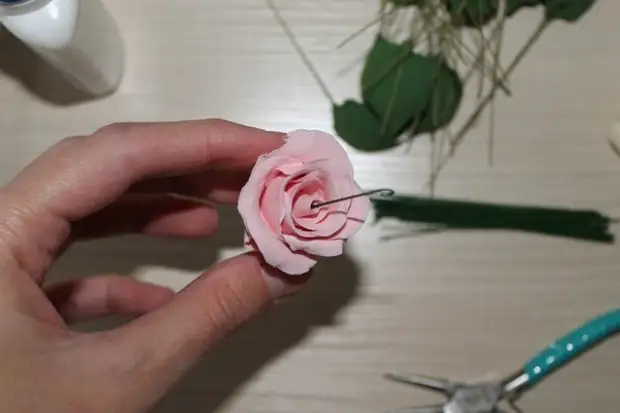
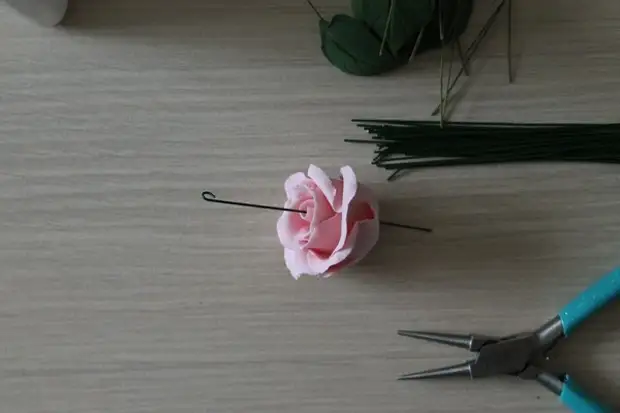
The loop must hide inside the roses,
It will hold the flower from random shake
For some reason, the wire, just lubricated with glue and stuck in the base of the flower, I do not always have a good flower. Therefore, I make such loops. They sometimes be seen in colors, but I prefer so than risking that some colors are just twisted from random movement. It will not stand at me at home, it is intended for a gift, and I want to protect the recipient from unpleasant surprises in the form of " The basis separately - flowers separately. "
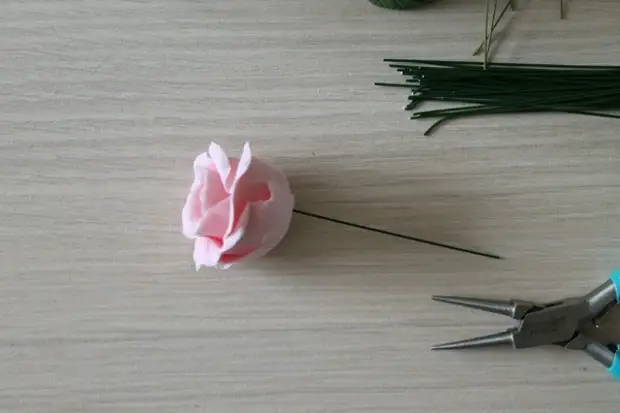
Insert loops with loops in all roses:
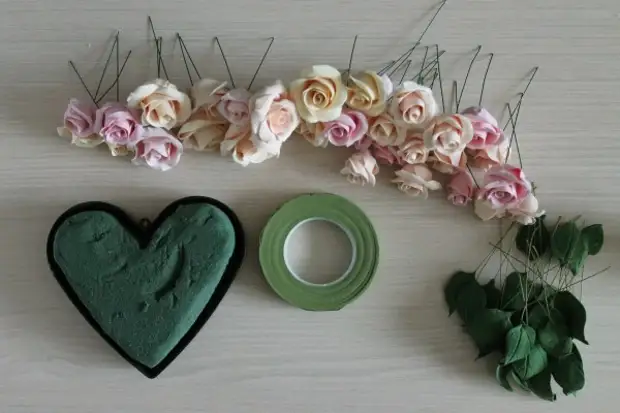
We select a few small roses (I turned out 10 pieces, the rest left it). Now we will adapt to them leaves. To do this, we tear or cut off a piece of tape tape. Length depends on how long the stalks are planned to be connected. I have 5-6 centimeters. We take a segment of tape tapes and tips and stretch to the sides: it will become a sticky.
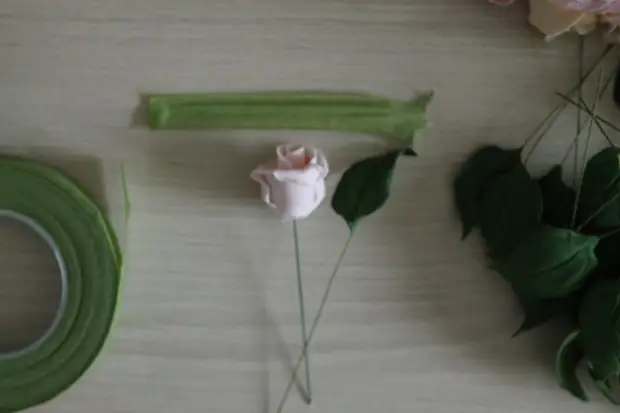
Watch two wires TEP-ribbon.
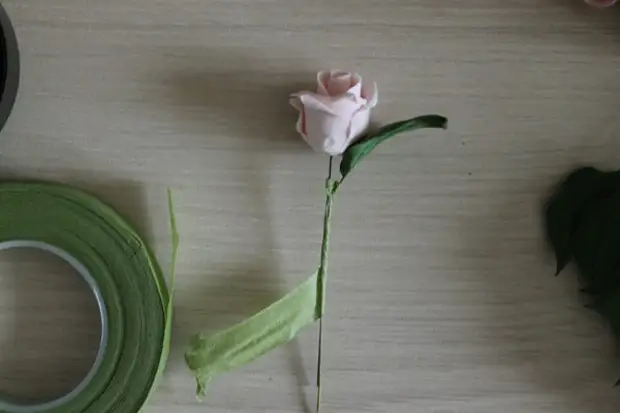
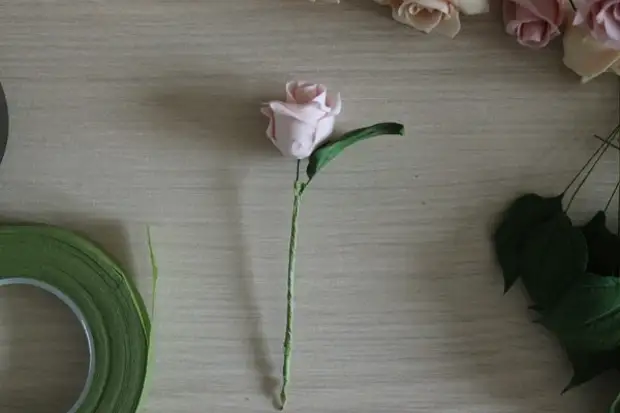
We do so with all selected small robes. In principle, the leaves can not be brought to the flowers, but it is so easier for me to more evenly distribute the remaining leaves. This tenth is like a reference grid.
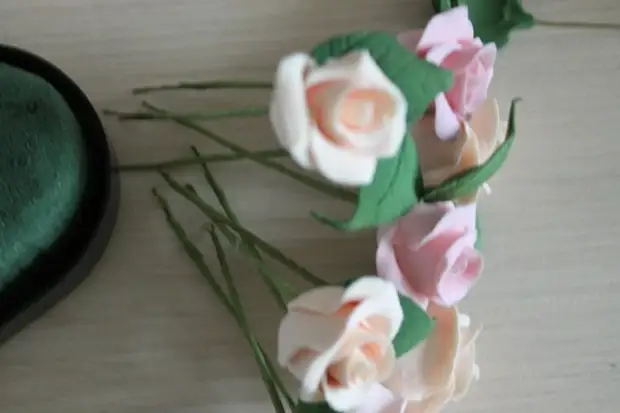
In the process of work, I suddenly realized that I did not like the black plastic base of the heart. Therefore, I cut off the strip of felt and glued to the plastic edge. (Instead of felt, it was possible to use ribbons, cloth or roll out the strip of clay, but I wanted to use felt, because it looks like a moss.
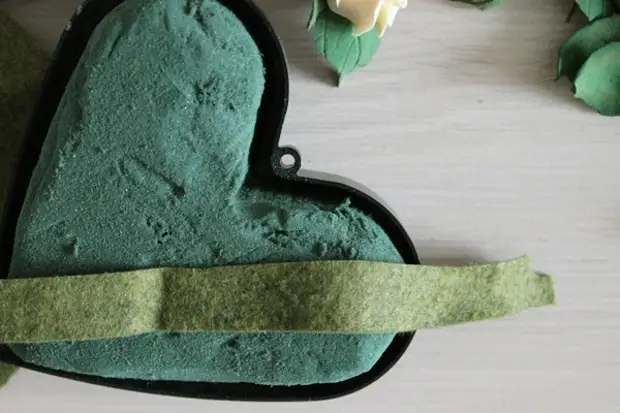
That's what happened:
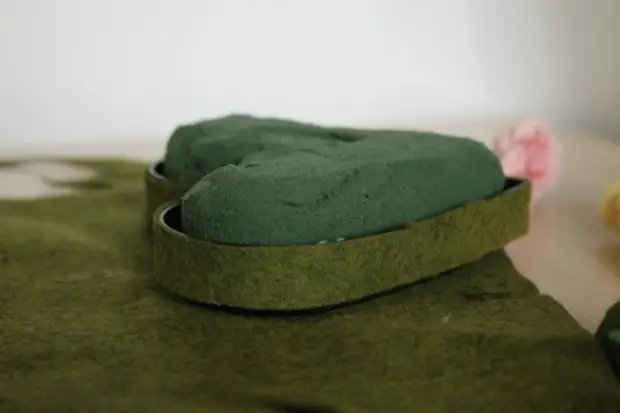
We start assembling the heart
I start with the largest colors. Usually we are assembled at the same time in the middle and at the edges - it's easier to watch the flowers everywhere at one height. This is important, the bouquet should not turn out to be kept.
I stick a flower in the middle and pretending the height of all the rest of the bouquet. We look: What is the length of the wire between the flower and the basis? Now stick to the rose to the very edge and slightly flexing the wire down so that the rose is better covered with an ugly edge.
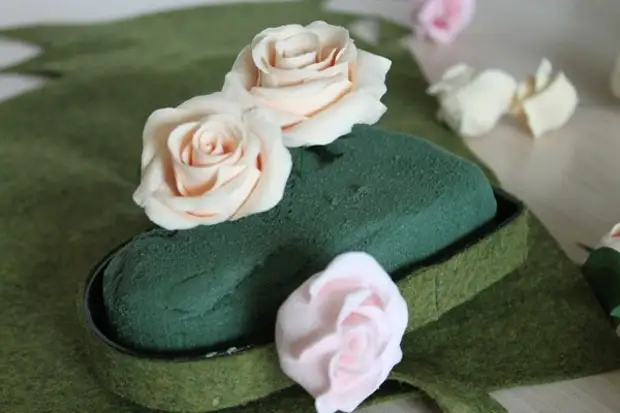
Compare the length of the wire at the bottom and at the top rose, it must be approximately the same. If it is different, focusing on the bottom rose: we did not work out the "wrong" of the colors, it means that it should be carefully hidden.
If the length of the central flower wire is greater than the flower at the edge, stick the upper flower deeper. If it is smaller than the flower at the edge - on the contrary, we slightly pull out the rose. If the wires are not enough, it will have to be replaced with a longer one. If the wire is long and it does not turn out to stick her plump - cut it.
After we have decided on the flower height, pull out these roses in turn, dry the wires of the wire in PVA glue and stick the flowers back. Watch that the height of flowers has retained on the past stage.
We continue to collect a bouquet. We work simultaneously with the edges and the center, carefully follow the flower height. Do not forget to make a wire glue. The smaller we take-inserting flowers, the better. Otherwise, you can get out of the oasis so that the wire simply stops holding.
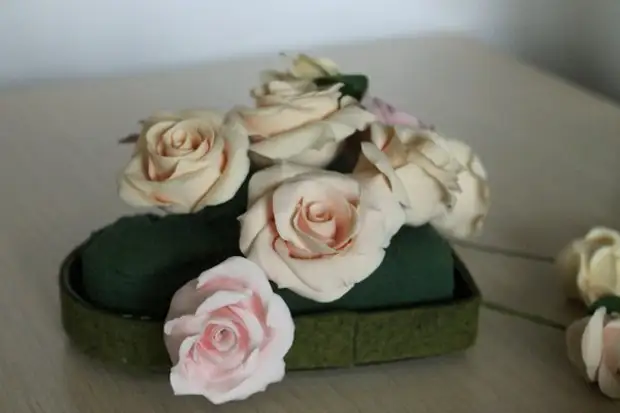
After a majority of large colors have been added, you can begin to add small. I start with those roses to which the leaves brushed. Here are only large flower and roses collected with leaves:
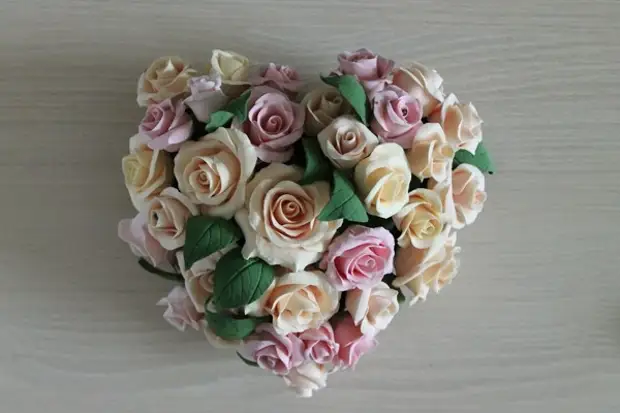
Now add the remaining leaves.
We add not just like that, but we look where we have gaps between flowers, and put the leaves there. Perhaps if there are too many spaces, it will be better to postpone the assembly and drip several colors. This is characterized by the modeling of polymer clay - the refinement of parts can continue throughout the process.

After all the holes are filled, through which the wire can be seen or the base, stick the leaves are already simply for symmetry and harmony, so that it does not work out that the halfcoming in the leaves, but the half-one - only flowers. Wires with leaves are also macaam in glue. Make sure that the bases of the leafs are hidden between the colors and are not sticking out.
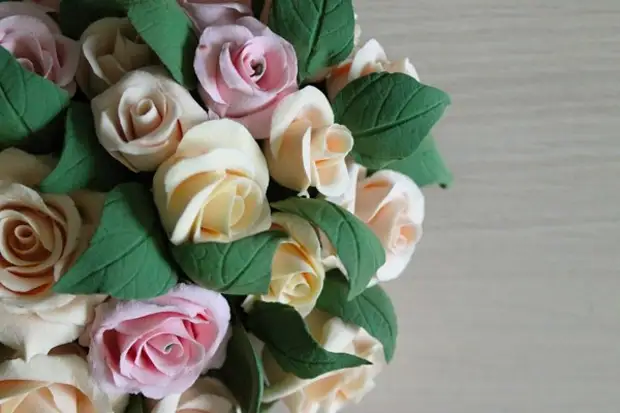
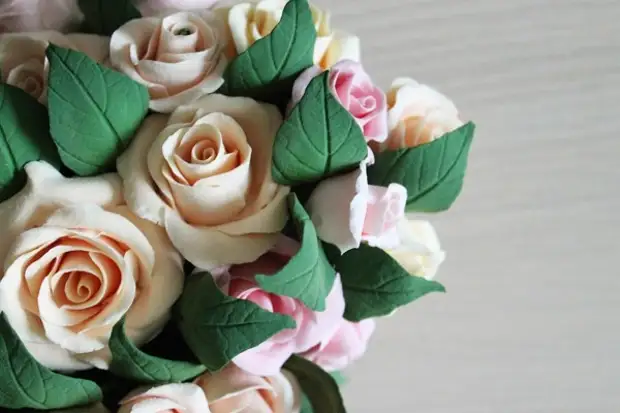
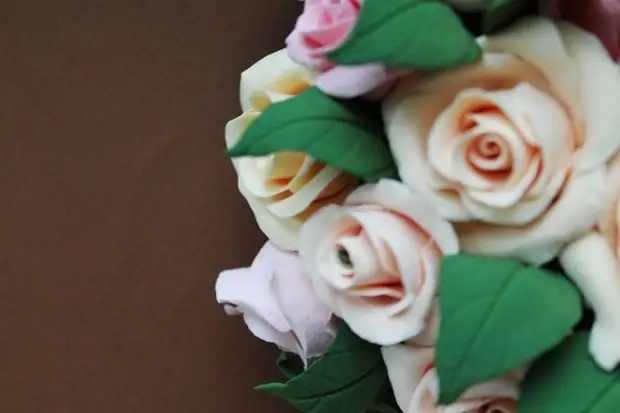
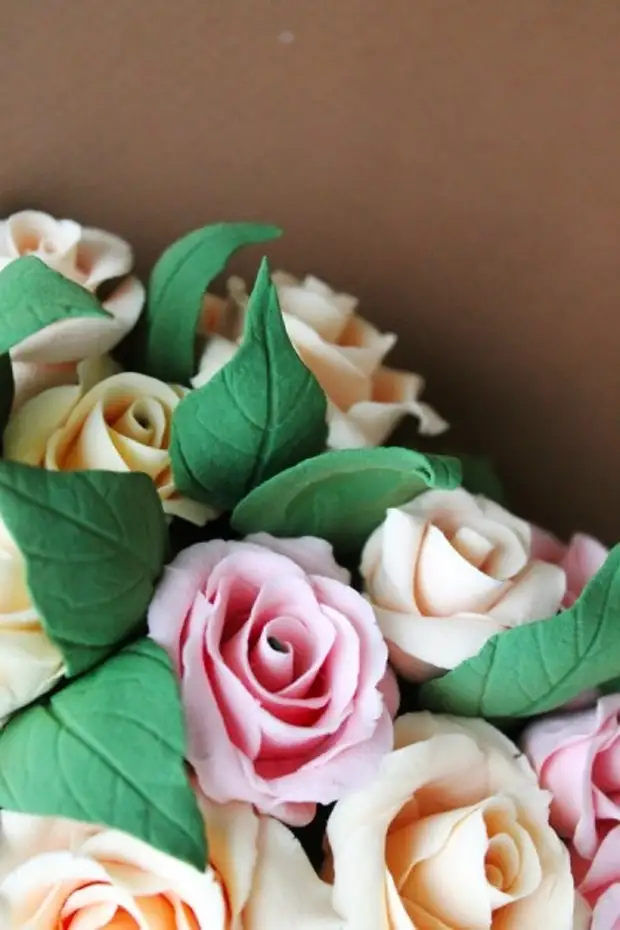
I correct the flowers and leaves so that the form is smooth. Everything, the composition is ready.
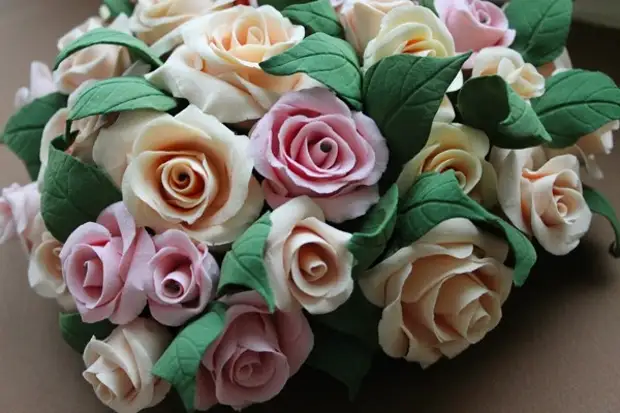
Heart author from roses - Maria (Lamariacha).

